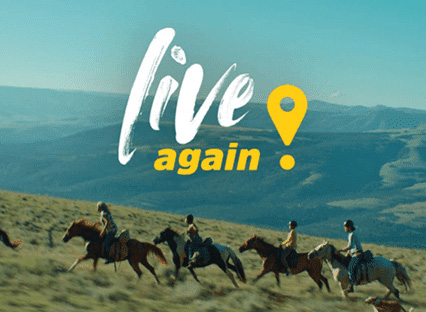|
| TOURISM |
 |
Tourism is a fast-growing sector which is recognised by the South African government for the role it plays in economic growth and poverty reduction. Tourism plays a significant role in influencing the attainment of economic goals set by the government which embraces a strategy for employment creation and growth. South Africa experienced significant growth rates in the tourism sector since 1994.
In recent years South Africa has improved its position on global rankings of top tourist destination; however the tourism sector was amongst those most heavily affected by the Covid-19 pandemic. Efforts to assist the recovery of the sector, post-pandemic are ongoing, and positive results are evident.
Tourists are attracted to South Africa as it offers an adventurous and yet affordable opportunity to chart the large diversity of South Africa’s scenery which shows up in the wide variety of different landscapes to suit most personal preferences. A wide and untamed coastline, wide open vistas, majestic mountains and luscious forests, fields of exotic flowers, scenic beauty as far as the eye can see. Its stunning combinations of culture, history, people and landscapes have made it a dream place to visit for large numbers of tourists.
In addition, South Africa is home to ten (10) United Nations Education, Scientific and Cultural Organisation (UNESCO) World Heritage Sites, noted for their significance in evolution and historical importance:
- Robben Island in Cape Town - (Western Cape) is probably one of the most famous isles in the world. Nelson Mandela spent 18 years of his 27-year long incarceration here. Today, Robben Island stands as a reminder to the world of Mandela and his comrades’ fortitude and resilience against a brutal government of oppression and racial segregation.
- The Cape Floral Region – (Western Cape) The magnificent Cape Floristic Region is, as its name implies, situated in the Western Cape and parts of the Eastern Cape provinces of South Africa. It is significant for being one of the world’s most diverse and abundant floral areas, home to about one-fifth of the vegetation in all of Africa. Perched right at the tip of the continent, this region is not only fascinating for those with a penchant for flora, but also spectacular.
- The Cradle of Humankind in the Gauteng province holds the clues to the origins of humankind dating back several millions years. It’s a place of scientific importance, especially the Sterkfontein Caves which housed the pre-human skull of Mrs Ples and the Little Foot hominid fossil and most recently Homo Naledi skeleton discovered in the Rising Star Cave.
- For more magic, make a turn at the Vredefort Dome in the Free State and make contact with the extra-terrestrial. It was here that a 2 to 5km radius crater struck the earth some two million years ago and changed the landscape of the northern Free State forever. The impact of the asteroid is evident some 300km from the place of landing and the unique evolutionary changes make for a fascinating trip.
- Ukhahlamba-Drakensberg Park in KwaZulu-Natal is not known as an open-air mountain museum for nothing. It boasts over 30 000 Bushman rock art inscriptions in the caves of the park. Endangered bird and plant species add to the appeal of the biodiversity to make it a premium eco-tourism destination.
- iSimangaliso Wetland Park Kwa-Zulu Natal - covering about 240,000ha, with a further 84,000ha in, on or under the sea, thissub-tropical paradise stretches 220km along the East Coast from St Lucia to the Mozambique border. iSimangaliso is teeming with life and has a mind-blowing variety of natural eco-systems ranging from dune, swamp and coastal forests to rocky and sandy shores, coral reefs and submarine canyons, mangroves, savannah grassland, thickets, woodlands, and the largest protected wetland in Southern Africa. The activities you can enjoy here include game drives, snorkelling, diving, bird-watching and hiking.
- Travel back into time with a visit to the Mapungubwe Cultural Landscape in the Limpopo Province. Here, remnants of early African civilisation give clues to life circa 900AD to 1300AD. Be inspired as you walk on the ruins of ancient palaces and settlements of our forebears.
- The Barberton Makhonjwa Mountain Land (Mpumalanga province). The Barberton Makhonjwa Mountain Land is the first UNESCO World Heritage Site in the province. Mpumalanga, which shares borders with Gauteng and Limpopo, has always been one of South Africa’s prettiest provinces in terms of dramatic landscapes. And the mountains are just one more dazzling gem in this treasure chest.
[Source: https://www.southafrica.net]
|
 |
The historical ties between South Africa and Indonesia, date back to Dutch colonialism and the Dutch East Indies Company, and have inextricably linked our two countries for centuries and generation – in particular the two key points formerly known as the ‘Kaap de Goede Hoop’ (Cape Town) and ‘Batavia’ (Jakarta). The city of Cape Town remains a favoured destination for Indonesian Muslims travelling to South Africa, particularly during Ramadan. This is where, today, a thriving community of Indonesian decent is in existence, particularly in the famous or Bo-Kaap or “Malay Quarter” as the suburb was previously known. The neighbourhoods of the Bo-Kaap are characterised by bright and vibrant hues, lined with cobbled streets – and are some of the most picturesque (and Instagrammable!) spots in South Africa.
South Africa is a very affordable tourism destination for Indonesians, with the exchange rate being approximately one rand (R1) to one thousand rupiah (Rp1000); and a number of flight routes are available with prices being comparable to other long-haul destinations. Indonesians can receive a visitor’s visa for a maximum of 90 days to travel to South Africa for tourism and/or business purposes. The South African Embassy in Jakarta remains available to assist Indonesians travelling to South Africa with visa requirements!
TOURISM Links and resources:
Regional Tourism Authorities
Animals & Plants
Geography and Climate
|
| |
| |
| |
| |
|
| |